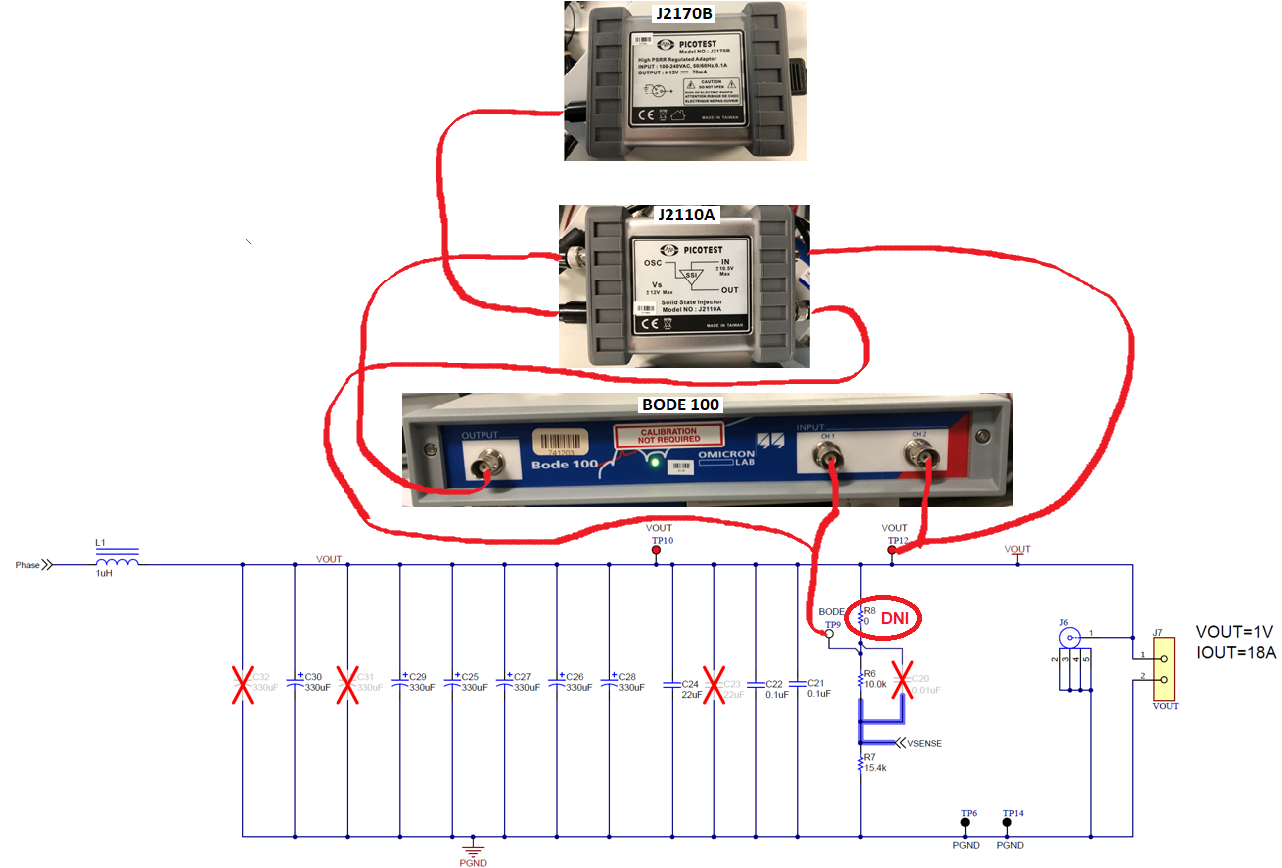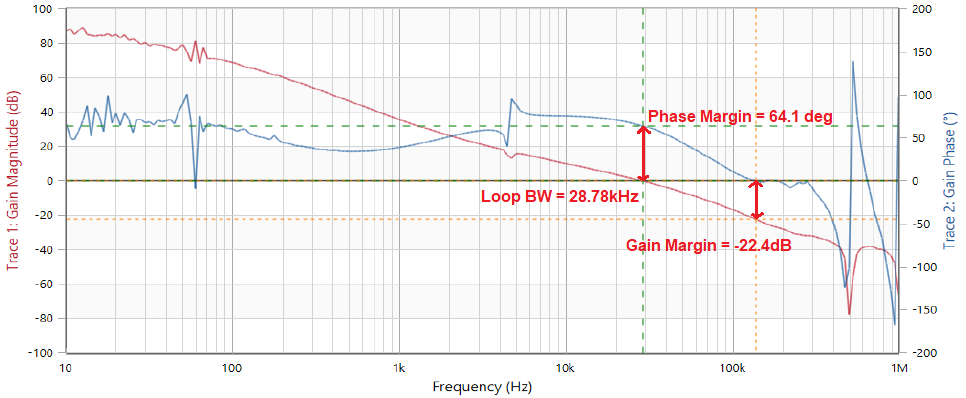SLVUC73B January 2022 – February 2024 TPS7H4003-SEP
4.6 Setup
The test setup, which includes several connections to Picotest Bode100 test instruments, is shown in Figure 4-7 with measurement results shown in Figure 4-8. The CHF, high frequency pole, component of the compensation circuit is optional. Omitting the CHF results in slightly increased phase margin. However, the benefit of including the CHF is that the gain curve is set in a downward trajectory as frequency increases, making a monotonic gain curve more likely to be achieved.
 Figure 4-7 Frequency Response Test
Setup
Figure 4-7 Frequency Response Test
Setup Figure 4-8 Frequency Response
Figure 4-8 Frequency Response